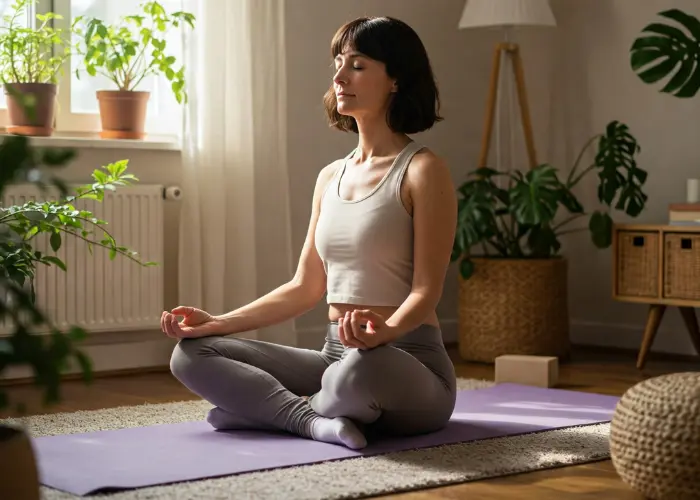In today’s fast-paced world, carving out a few minutes of peace can feel like a luxury. But the truth is, you don’t need hours of silence or a mountaintop retreat to enjoy the benefits of meditation. Whether you’re trying to reduce stress, sharpen focus, or simply reconnect with yourself, simple meditation techniques can make a big difference—even if you’re brand new to the practice.
Let’s explore easy, beginner-friendly meditation methods that fit naturally into your day—and support your overall well-being.
Why Try Meditation? The Real-Life Benefits
Meditation isn’t just a wellness trend—it’s a time-tested practice with real mental and physical benefits. According to the National Institutes of Health (NIH), meditation can help:
- Reduce stress and anxiety
- Improve emotional balance
- Support sleep quality
- Enhance focus and clarity
These benefits don’t require hours of practice. Even just 5–10 minutes a day can make a meaningful impact over time.
1. Breath Awareness Meditation
Best for: Quick stress relief, mental clarity
This is one of the simplest and most accessible forms of meditation. All you need to do is focus on your breath.
How to try it:
- Sit or lie down comfortably.
- Close your eyes gently.
- Inhale deeply through your nose, counting to four.
- Exhale slowly through your mouth, counting to six.
- Repeat for 5 minutes.
When your mind wanders (which it will!), just return your focus to the rhythm of your breath. It’s a gentle way to center yourself, anytime, anywhere.
2. Body Scan Meditation
Best for: Releasing physical tension, improving mind-body awareness
A body scan helps you tune into how your body feels, one area at a time. It’s especially helpful before bed or after a long day.
How to try it:
- Lie down or sit in a quiet place.
- Start by bringing awareness to your toes.
- Gradually “scan” your body upward—feet, legs, hips, stomach, and so on—up to your head.
- Notice any sensations, without judgment.
This technique promotes relaxation and helps release tension you didn’t even realize you were holding.
3. Guided Meditation Apps and Videos
Best for: Staying focused, beginners who need structure
If silent meditation feels intimidating, you’re not alone. Guided meditations provide step-by-step instructions with soothing audio, which can be great for building a habit.
Try apps like:
- Insight Timer (free, includes a huge variety of guided sessions)
- Calm or Headspace (both offer beginner-friendly tracks)
The CDC even recommends meditation as a practical way to cope with daily stress and support emotional well-being.
4. Walking Meditation
Best for: Those who struggle to sit still
Meditation doesn’t always mean sitting cross-legged in silence. Walking meditation lets you combine gentle movement with mindfulness.
How to try it:
- Choose a quiet path (indoor or outdoor).
- Walk slowly and focus on each step.
- Feel your feet connect with the ground.
- Breathe naturally, staying present.
This is a great technique to use on your lunch break or while enjoying nature.
Make It a Habit: Tips to Stay Consistent
Building a meditation habit doesn’t have to be hard. Here are a few simple tips:
- Start small. Even 2 minutes counts.
- Pick a time. Morning or bedtime are ideal for routine.
- Use reminders. Set a daily phone alarm or post-it note.
- Be kind to yourself. Don’t worry about doing it “right.”
Meditation is a personal journey. The key is consistency, not perfection.
Ready to Begin Your Mindful Journey?
Adding meditation to your daily routine can be one of the most grounding, empowering self-care choices you make. With just a few minutes a day, you can reduce stress, improve focus, and nurture a deeper connection with yourself—naturally.
🧘♀️ Which technique will you try first?
Share your experience in the comments.



